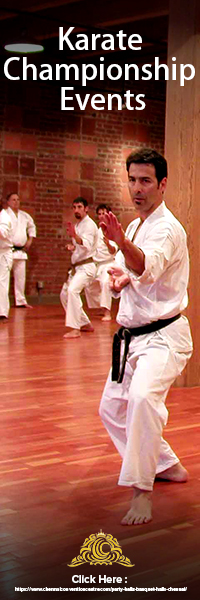Why Is Breathing The Most Important Karate Exercise?
The Karateka goes through a lot. They train for years to perfect their technique, and it all comes down to the art of breathing. It is because when students are exhaling during striking techniques, they’re lowering inhibitions making them more conscious in decision-making moments about whether or not violence should be used as an option at that moment – so controlled breaths can help keep you from being violent! When we inhale, our body tells us “breathe” with every breath, but what does it say on exhalation? There’s no clear message telling your brain how long before doing something again; this has been shown by scientists who created two groups. One was told when blowing out air after each deep inhalation would increase lung capacity while
Karate students would do well to be aware of the power their breaths have over them. When they master breathing techniques, these skills are constantly practiced during training and competition. Controlled breathing is important in karate because it provides physical and mental benefits–the only process that we can both control voluntarily and involuntarily! As a result of its effects on our subconscious energies, controlled breathing helps with stress management by altering body energy levels; furthermore, due to how it affects neurological systems, one’s ability for better concentration increases thanks to controlled breathwork greatly.
In karate, there are several different types of breathing exercises.
Diaphragmatic Breathing:
Karate is a martial art that has been practiced for centuries. To perform at your best, you have to be in peak physical condition. One of the exercises karate fighters can do diaphragmatic breaths. They focus on deep inhales and exhale through their mouth, which helps keep them from getting tired out quickly during one-on-one training sessions or sparring matches with an opponent.
In karate, there are many different types of breathing techniques. Still, Diaphragmatic Breathing is when people breathe into their lower belly using the diaphragm muscle while focusing on taking deep inhalations and exhalations, so it contracts and relaxes upon each breath cycle, helping take pressure off some muscles like those.
2. Ribcage Breathing:
Breathe deeply from your core! Ribcage Breathing is the act of expanding and contracting your rib cage by breathing in, then out. Who should do this type of breathing through both nose and mouth to avoid mixing it up with diaphragmatic or stomach-based breaths? So breathe deep for a few seconds at a time while using this technique, inhale four times each session–hold the last one as long as you can—and exhale when finished
3. T-Spine Breathing:
Correctly breathing is critical for good health. T-spine breathing, where you inhale towards the back and exhale through your mouth, can be difficult to do at first, but with practice, it becomes easier!
4. Chest Breathing:
Chest breathing is the final type of Karate breath. Who can do it either through your nose or mouth and consists of taking a deep, relaxed breath to fill up with air before exhaling it all out again? The chest should expand on inhalation while remaining still on exhalation so that both shoulders are elevated – this makes sure you’re doing it right!
Karate teaches students the importance of discipline and control. Controlled breathing can be a great help in achieving these things, which is why you should enroll your child into Karate classes if they are interested!







